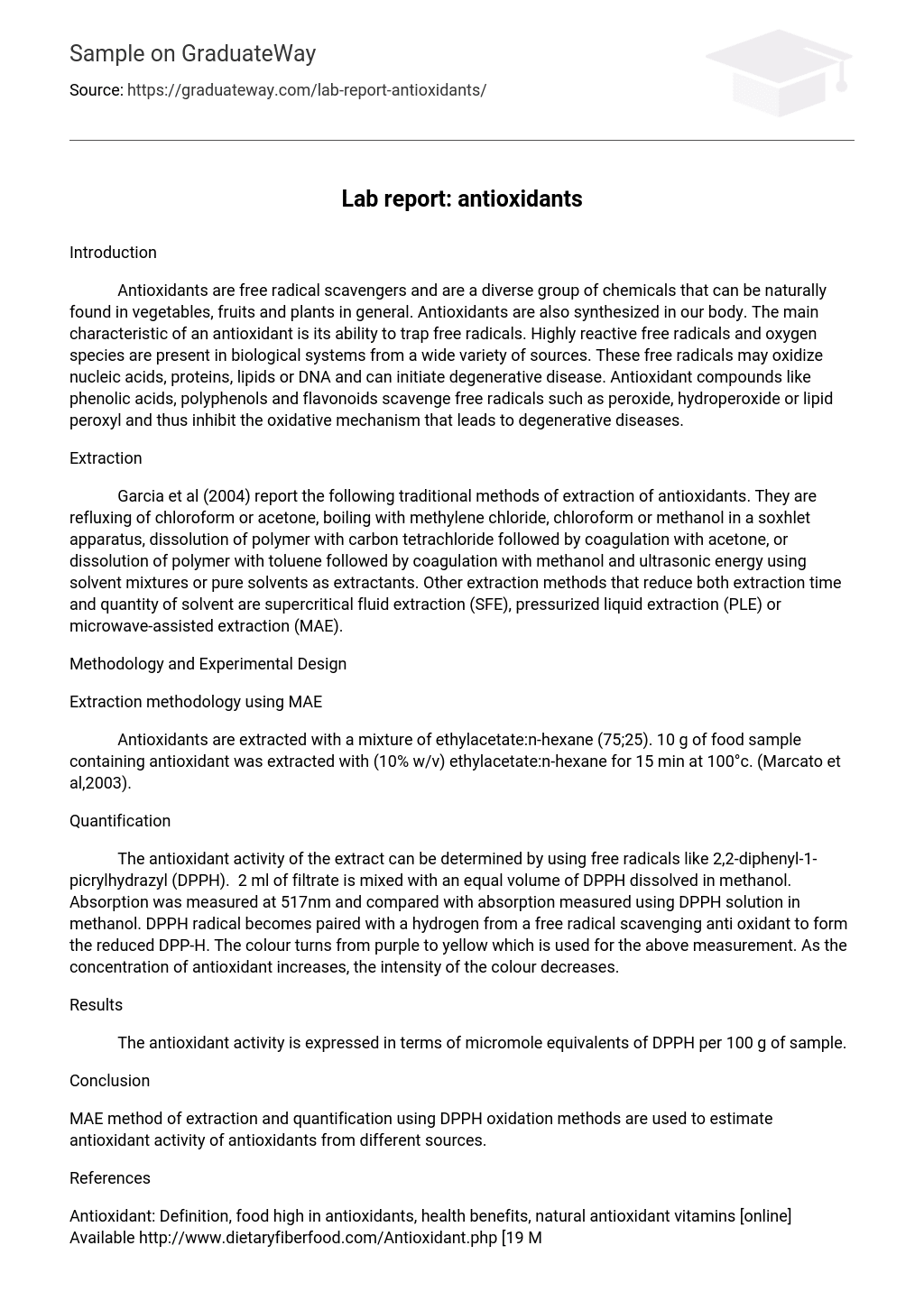Introduction
Antioxidants are free radical scavengers and are a diverse group of chemicals that can be naturally found in vegetables, fruits and plants in general. Antioxidants are also synthesized in our body. The main characteristic of an antioxidant is its ability to trap free radicals. Highly reactive free radicals and oxygen species are present in biological systems from a wide variety of sources. These free radicals may oxidize nucleic acids, proteins, lipids or DNA and can initiate degenerative disease. Antioxidant compounds like phenolic acids, polyphenols and flavonoids scavenge free radicals such as peroxide, hydroperoxide or lipid peroxyl and thus inhibit the oxidative mechanism that leads to degenerative diseases.
Extraction
Garcia et al (2004) report the following traditional methods of extraction of antioxidants. They are refluxing of chloroform or acetone, boiling with methylene chloride, chloroform or methanol in a soxhlet apparatus, dissolution of polymer with carbon tetrachloride followed by coagulation with acetone, or dissolution of polymer with toluene followed by coagulation with methanol and ultrasonic energy using solvent mixtures or pure solvents as extractants. Other extraction methods that reduce both extraction time and quantity of solvent are supercritical fluid extraction (SFE), pressurized liquid extraction (PLE) or microwave-assisted extraction (MAE).
Methodology and Experimental Design
Extraction methodology using MAE
Antioxidants are extracted with a mixture of ethylacetate:n-hexane (75;25). 10 g of food sample containing antioxidant was extracted with (10% w/v) ethylacetate:n-hexane for 15 min at 100°c. (Marcato et al,2003).
Quantification
The antioxidant activity of the extract can be determined by using free radicals like 2,2-diphenyl-1-picrylhydrazyl (DPPH). 2 ml of filtrate is mixed with an equal volume of DPPH dissolved in methanol. Absorption was measured at 517nm and compared with absorption measured using DPPH solution in methanol. DPPH radical becomes paired with a hydrogen from a free radical scavenging anti oxidant to form the reduced DPP-H. The colour turns from purple to yellow which is used for the above measurement. As the concentration of antioxidant increases, the intensity of the colour decreases.
Results
The antioxidant activity is expressed in terms of micromole equivalents of DPPH per 100 g of sample.
Conclusion
MAE method of extraction and quantification using DPPH oxidation methods are used to estimate antioxidant activity of antioxidants from different sources.
References
Antioxidant: Definition, food high in antioxidants, health benefits, natural antioxidant vitamins [online] Available http://www.dietaryfiberfood.com/Antioxidant.php [19 May 2008]
Garcia, M. S. D, Lopez, J.M, Bouza, R, Abad, M.J, Soto, E. G and Rodriguez, M.V. G (2004), ‘Extraction and quantification of antioxidants from low-density polyethylene by microwave energy and liquid chromatography’ Analytica Chimica Acta 521 , p 179-188.
Marcato, B. Guerra, S, Vianello and Scalia, S (2003) Int. j. of Pharm. (9) p 217.-225
Prakash, A, Rigelhof and Miller E, ‘Antioxidant Activity’ [online] Available: www.medlabs.com/file.aspx?FileID=56 [19 May 2008]





